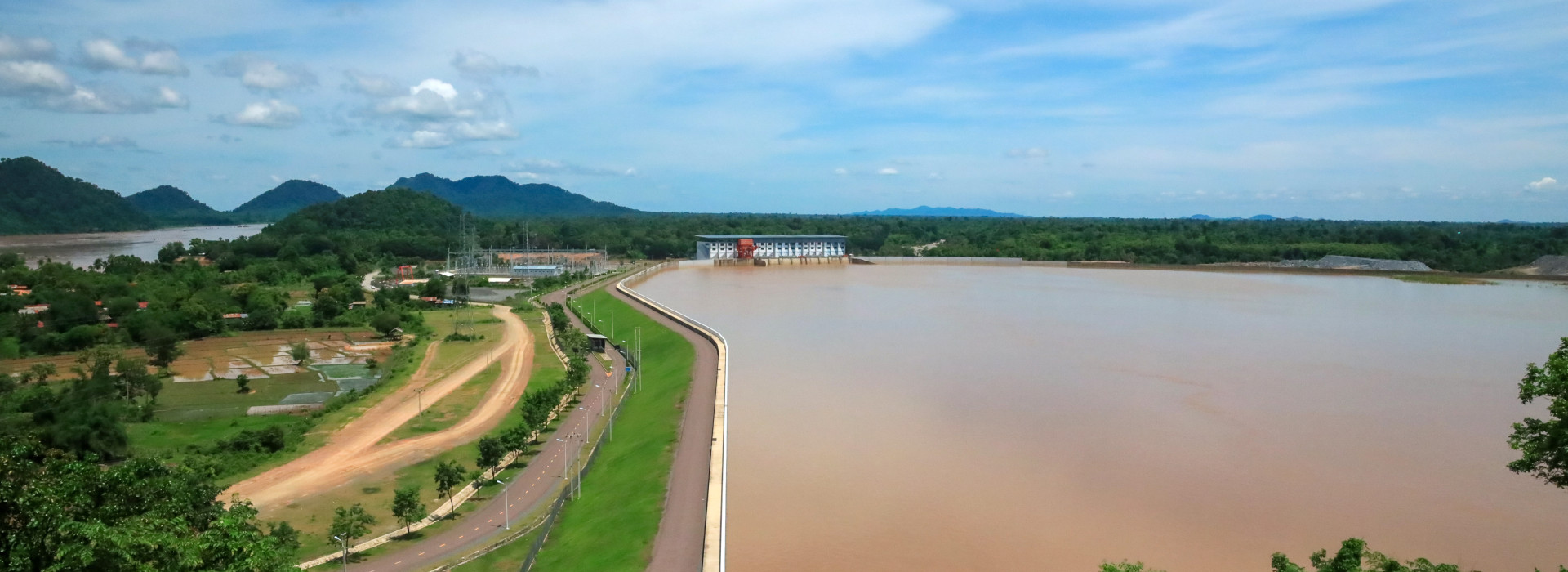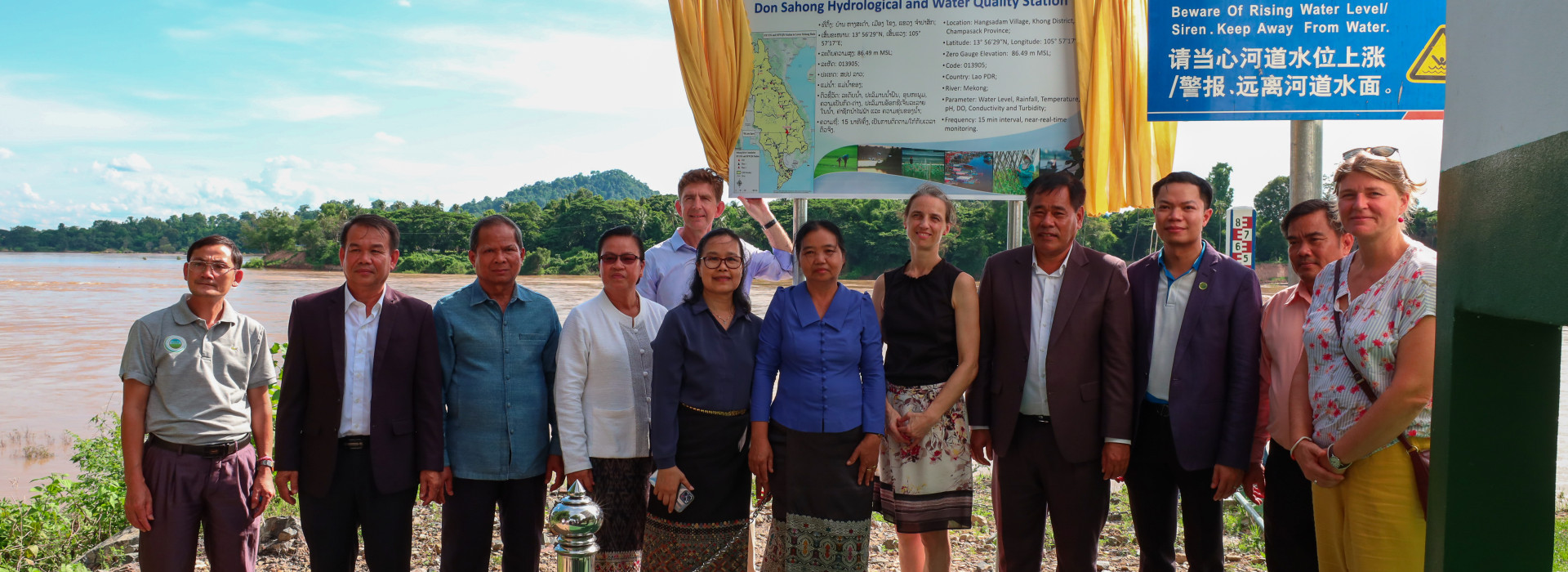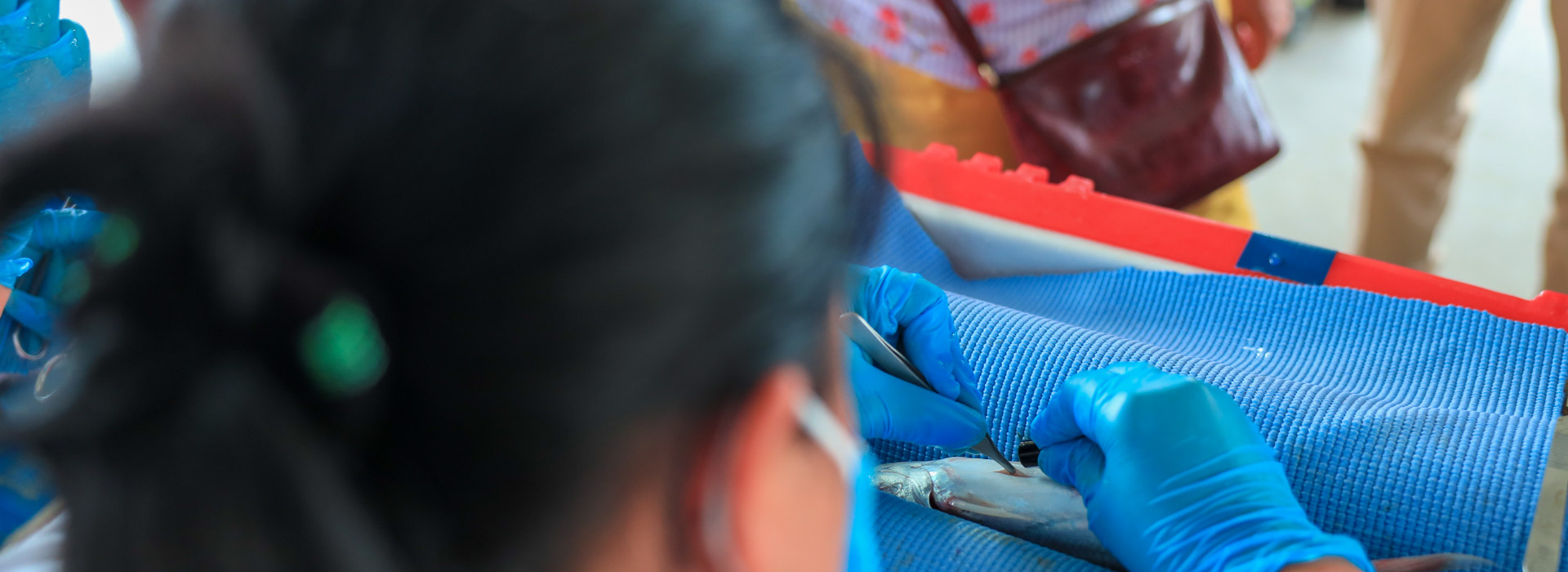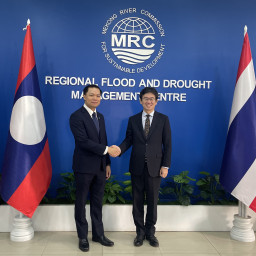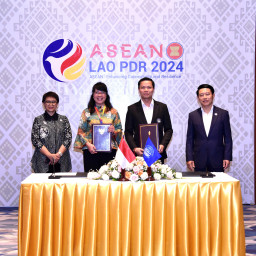MRC unveils technology to monitor Mekong water quality and fish migration
Siphandone, Lao PDR, 9 June 2022 — With hydrological projects now a daily reality along Southeast Asia’s most important waterway, the Mekong River Commission and its partners have introduced new technology to measure if one large project will have significant impact on the river’s water quality, flow or fish population.
At the Don Sahong Dam, less than two kilometres upstream of the Laotian-Cambodian border, the MRC showcased two new sets of equipment at a June 7th unveiling: The first will monitor water level and quality immediately below the dam – and report if anything adversely affects that quality – in near real-time. This is vital for the millions of fishing and farming families who rely on the Mekong, even for drinking water.
Related to that, the second technology is an “acoustic telemetry” system that is being attached to some migratory, transboundary fish species. Because such dams may disrupt the tranquil fish environment, developers are routinely expected to install an elaborate “fish passage” for the fish to be hoisted upriver and downstream, where they typically spawn and feed, respectively. However, to date there’s been no way to prove if the Don Sahong fish passage works as intended. This new tagging system will provide that evidence, as it tracks fish movements up and downstream of a few natural-like fish passages (also known as fishways), including the Hou Sadam and Hou Xangpheuk channels, which the developer modified.
“Effective policies require accurate data,” says Anoulak Kittikhoun, CEO of the MRC Secretariat. “It’s important for us to understand if and how the dam affects water flow and quality. Likewise, if the fish passage works. Then, if needed, we’ll propose appropriate measures for the dam to adjust its operations.”
Kittikhoun noted the value for future projects, too: “The findings and recommendations can also be made for similar dams, so they can build one that doesn’t just generate electricity, but also functions harmoniously with people’s livelihoods – through fisheries resources and other river ecosystems.”
The need to better monitor Mekong water quality has grown obvious over the years. Since the 1985 inception of the Water Quality Monitoring Network (WQMN), the MRC was technologically limited to only measure water quality manually, on a monthly basis. That data was then submitted only at year’s end, with no warning of a sudden change in water quality.
Moreover, the Don Sahong station wasn’t even a WQMN member – so shared no data with the MRC. Now, though, the dam operator has joined in an MRC-Joint Environmental Monitoring (JEM) pilot project. The installed equipment will automatically measure water quality every 15 minutes, then transmit it to the central MRC database – which disseminates it to Member Countries and riverine communities.
“It’s important for all of us to understand the correlation between changes in water level and water quality – as quickly as possible,” says Chanthanet Boualapha, Laotian Vice Minister of Natural Resources and Environment. “This station is in a technically advantageous location to monitor this, as well as cost-effective, because both types of equipment fit into one house. The location is accessible year-round, which makes it easy for relevant agencies to maintain it.”
Then there’s the question of what’s happening to the fish, which is also connected to food security and individual health across the region. The MRC estimates that more than 40 million people – roughly two-thirds of the Lower Mekong River Basin population – are actively involved in riverine fisheries, economically. However, the MRC is regularly reporting catch rates in decline, with larger numbers of fish either smaller or immature.
In conjunction with its dam construction, the Don Sahong Hydropower Project improved several natural channels around the dam (including the Hou Sadam and Hou Xangpheuk channels), for these fish passages, which are defined as “any device used to promote and regulate safe fish migration across hydroelectric facilities in both directions, up and downstream.” Observing fish movements is critical near the dam. Migratory fish, like the Mekong giant catfish, typically swim upstream to spawn, migrate down to the flood plain to feed, then drift larvae to grow and mature.
The new acoustic-telemetry system requires the delicate tagging of fish, to monitor their movements up and downstream. If the fish toting this equipment aren’t locating or using the passages, those details will help inform the dam developer. They’ll then be expected to consider modifications or alternative solutions to facilitate fish migration.
For the MRC-JEM Programme, this is a new environment to test out the telemetry tagging system. If it successfully tracks fish through the modified channels of the Don Sahong hydroelectric dam, the team expects the system to be applied elsewhere, expanding their knowledge of fish migration and spawning across the Basin.
“There are many variables,” says Lee Baumgartner, a Freshwater Fish Ecologist and Professor at Charles Sturt University. “Some species of fish don’t like the tag; some do like it. The environment is the most important factor. The technology works extremely well in big lakes, oceans, or deep rivers, but we’ll find out how well it works in small channels, shallow water, fast water, or water with a lot of rapids. We’ll know more in two or three months’ time.”
The JEM is financially supported by the MRC Member Countries and development partners, including Germany and Australia.
“Germany has a long-standing cooperation with the MRC and we’ve provided over 67 million Euro in technical and financial support for better transboundary water cooperation in the region,” said Annette Knobloch, German Ambassador to Lao PDR.
While acknowledging the high potential for economic growth from hydropower generation, the Ambassador noted the many challenges that keep arising as a result of water related resources development.
“We encourage the Mekong countries and other actors to continue taking appropriate actions to tackle these development challenges, especially those that have transboundary social and environmental implications.”
Note to Editors:
The MRC is an intergovernmental organization established in 1995 to boost regional dialogue and cooperation in the Lower Mekong River Basin. Based on the Mekong Agreement among Cambodia, Lao PDR, Thailand and Viet Nam, the MRC serves as both a regional platform for water diplomacy and a knowledge hub – to manage water resources and support sustainable development of the region.
###
